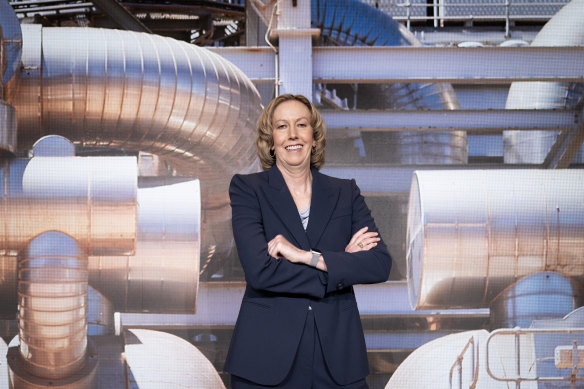[ad_1]
Woodside CEO Meg O'Neill said she was confident the energy major's surprise $1.8 billion bid for a U.S. liquefied natural gas exporter would pay off as the company moves to calm investor discontent over its recent spending spree.
The $52 billion oil and gas giant surprised the market in July by acquiring US liquefied natural gas company Tellurian in a $1.2 billion deal to acquire the permitted and designed Driftwood project in Texas.
Perth-based Woodside on Tuesday reported a 19 per cent – or more than $2 billion – drop in revenue in the six months to June 30. Underlying net profit for the period fell 14 per cent to $1.63 billion ($2.41 billion), due to lower prices and production.

Woodside Energy CEO Meg O'Neill at the company's annual investor meeting in Sydney last November.credit: Louis Duvey
Australia’s largest oil and gas company earned the equivalent of $US63 a barrel in the six months to June, about $US11 less than a year ago, while production fell 2%, hurting revenue. The company cut its interim dividend to 69 US cents ($US1.02) per share in full.
In Australia, Woodside produces gas that it then liquefies for export, but it will buy natural gas to supply to Driftwood, which can export 27.6 million tonnes of LNG per year.
O'Neill told investors on Tuesday that LNG from Driftwood is expected to fetch a higher price in Europe and Asia than Woodside would have to pay to buy the LNG and then liquefy it at Driftwood.
“The shale gas business in the US is very different from our capabilities and skills,” she added. “The market is so deep and liquid that we can buy gas off the grid.”
Woodside's knowledge of LNG plants and marketing, and its financial strength, give it an advantage over its competitors in the United States, O'Neill added.
Woodside's large cash holdings are also expected to help it avoid financing complex and expensive projects, which force other U.S. projects to first find buyers and then finance before committing to construction.
[ad_2]
Source